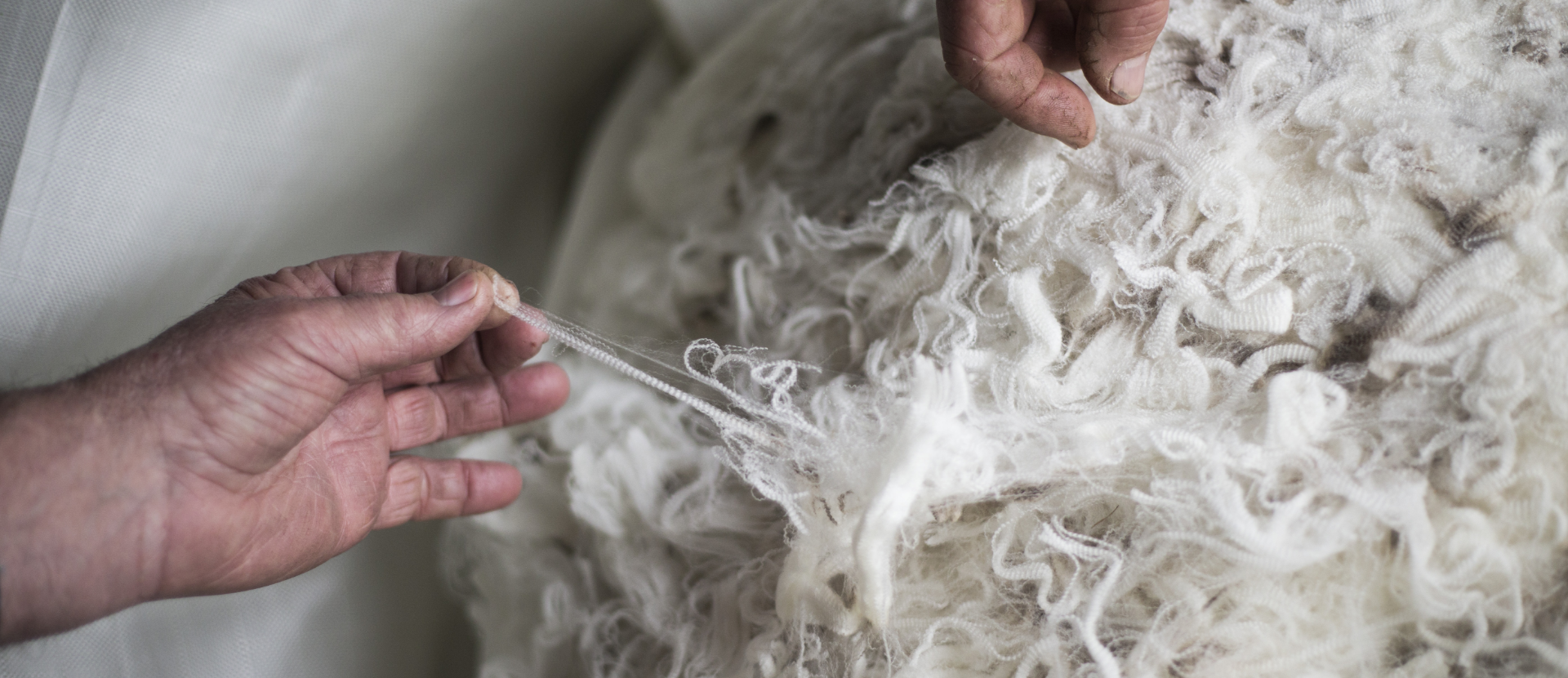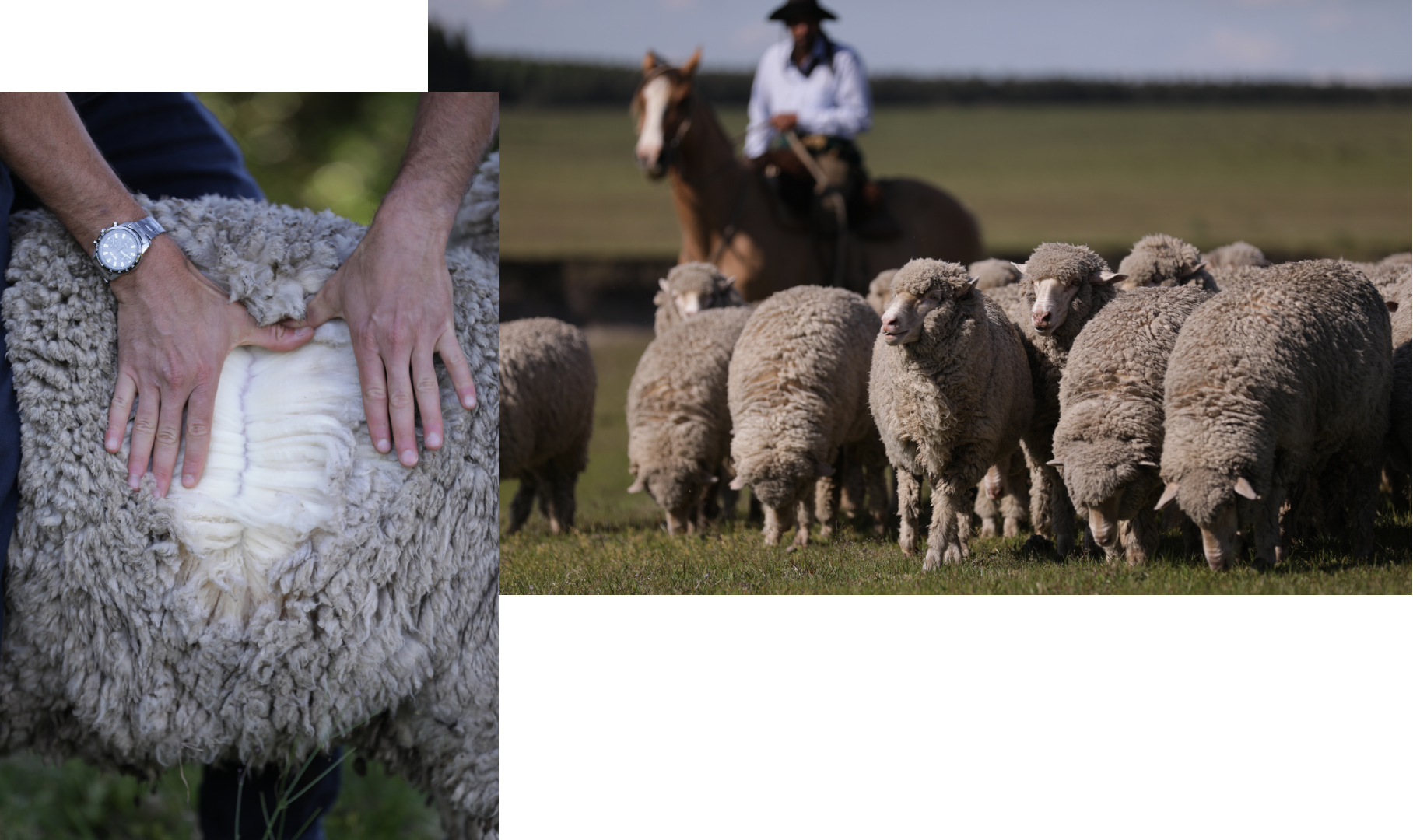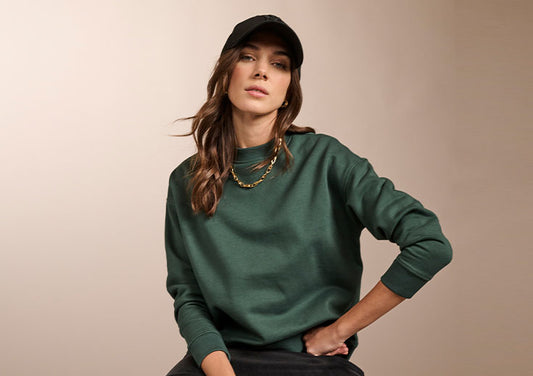Nativa™ Regenerative Wool

Why is wool bad?
Conventional farming can cause the health of the soil to deteriorate due to poor practices encouraged by overconsumption. As the ecosystem of soil is so delicate, this decrease in quality makes it harder for plants to grow, disrupts biodiversity and means the soil can absorb less water as well as carbon dioxide from the atmosphere.
What is regenerative wool?
Regenerative agriculture practices traditional farming techniques that protect farmers and animals while improving the health of the farm.
This way of farming focuses on the biology and fertility of the soil as a driving force for the health of the whole farm ecosystem. Generally, the methods used will cover protecting the soil from erosion by using cover crops, returning nutrients to the soil and encouraging co-habitation of different species to promote biodiversity.
Animals – including sheep – can play a vital role is regenerative agriculture by providing natural alternatives to fertilizers (that may also increase water retention) and introducing rotational grazing to increase the resilience of the plant root systems.
Regenerative farming also works to protect the health and happiness of the animals and the farmers, by working hand in hand with responsible farming and social standards, and providing farmers with a premium for their wool.

What does Nativa do?
The Nativa Regenerative Agriculture Programme is based on scientific data and covers three pillars; animal welfare, land management and corporate social responsibility.
Nativa ensures that the sheep are protected against hunger, pain, fear and distress. The holistic approach allows the farms to not reach over-capacity, while making sure every sheep is well looked after and provided with healthy pasture. Alongside the NATIVA™ certification, which is carried out annually by a third part auditor, the wool is also awarded the RWS certification which primarily focusses on animal welfare.
The land management practices that Nativa implement ensure ecological improvements at the farm level, including improved soil health, increased biodiversity, more responsible water management and decreased carbon emissions. A farm-specific risk analysis and management plan is carried out with the aim of improving the water quality and increasing the CO2 capturing abilities of the soil.
Nativa goes above and beyond by forming partnerships with their farmers to assist them in the transition towards regenerative farming, which aims for continual improvement instead of a target threshold. Workers at every stage of the supply chain are protected against human rights violations, corruption, poor labour conditions as well as ensuring high level health & safety practices.

The company uses blockchain technology to ensure the wool is 100% traceable from farm to final garment and you can see more of this journey by scanning the QR code on the garment swing ticket. The wool we are using to make our Emmy and Christine jumpers comes from a collection of farms in Uruguay.
In Uruguay, over thirteen farms are already transitioning into NATIVA’s regenerative program through a four-year programme, working with leading organisations and researchers. The farms benefit their ecosystems and positively impact local communities, like the family-run Cerro Bombero farm in the North of Uruguay.

Nativa connects their farms with wool spinners and our wool travels to a spinner in Uruguay, Lanas Trinidad, that has spent many years transitioning to a circular economy. They have developed their scouring system to recover the wool grease to use in alternative inputs and treat their effluents using a lagoon system. They capture the methane gas and use it to power their own operations and use wool dust as a biofertilizer for the farmers’ crops.




